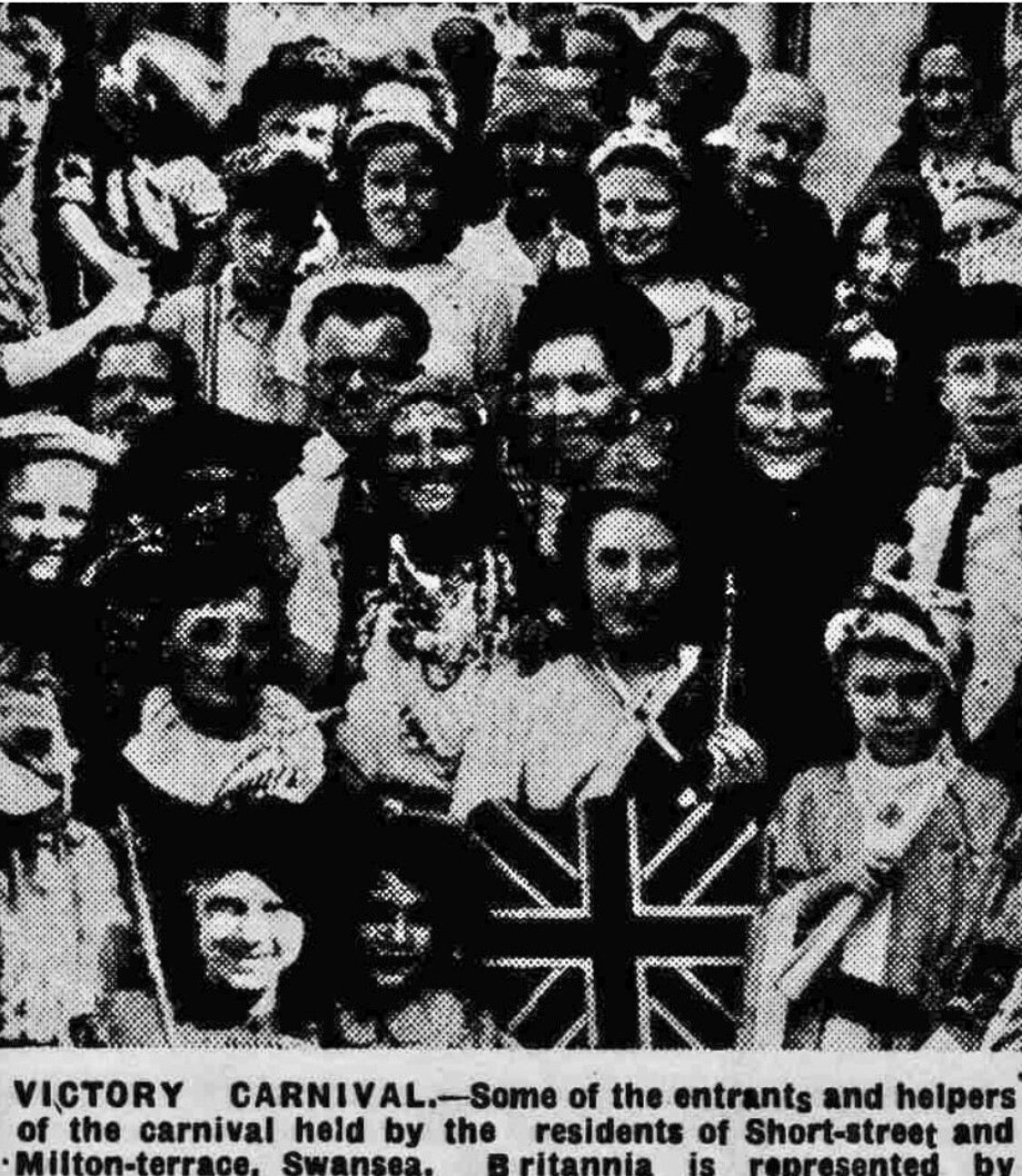Tomorrow marks the 80th anniversary of VE Day, which marked the official end to World War II in Europe. This week, learn how the people of Swansea celebrated - from parties and pianos in the street to the gorse-lit valleys above.
Catch you on Sunday!
Andrew
The Long Wait Ends

The front page of the South Wales Evening Post to announce victory in World War 2.
When Swansea awoke to VE-Day on May 8th, 1945, the waiting was finally over. After years of hardship, blackouts, and bombing, the Evening Post reported how residents “waited patiently for many hours” to hear the official announcement of war's end in Europe.
What followed were two days of celebration unlike anything we might recognise today. With few exceptions, all of Swansea held Victory teas in the street, and many of these swelled into huge affairs - including hundreds of bonfires, dozens of dancers, and the crackling of fireworks.
Across Swansea, neighbours dragged pianos – some untouched from pre-war days – into the streets. These became the centrepieces for impromptu dances, with other music provided by loud-speakers and bands of musicians made up on the spot. Celebrations went on until the early hours.
Throughout the city, streets were filled with decorations. Windows that had been darkened for years now blazed with fairy lights in red, white and blue and flags waved proudly.
Music and Dancing Fill the Streets

Families of Short Street and Milton Terrace celebrate VE Day, 1945. Britannia is represented by Jessica Everall, a pupil of Twickenham Kneller School, evacuated to Swansea in 1944.
In Beechwood Road, Uplands, about 700 people gathered to take part in the community singing and dancing under bright lights strung across the road. Several hundred servicemen joined in the fun.
In the Sandfields, described as "probably the most active part of the town," victory parties and bonfires raged for both nights. Meanwhile, high above the city, local farmers in the upper Swansea Valley created what the newspaper claimed was "the widest bonfire in the country" by simultaneously igniting the gorse they had been saving up specifically for this moment.
There was a fire of a different kind in other parts of Swansea, including Brynmill, where an effigy of Adolf Hitler was hung from a tree and burned.
The celebrations were particularly moving in Milton Terrace in the city centre, which had suffered some of the worst damage in the Swansea Blitz - three nights of German bombing that flattened much of the centre of town. Here, residents held an "impressive religious service in the street," with householders giving addresses and prayers while united singing "brought tears of joy to the majority who attended.”
And in Rhondda Street, "proceedings were interrupted for a happy announcement that a son of one of the neighbours had arrived in England from a German prison camp and was on his way home."
From Guildhall to Parade Ground

A street party at Lôn Illtyd and environs, Cwmgwyn, Swansea, celebrating VE day. May 1945 (Image: WalesOnline/West Glamorgan Archive Service)
At one point, a large crowd gathered outside the Guildhall “awaiting the floodlighting of the beleaguered building.” There were cheers when the lights were switched on, and the crowd waited, expecting the Mayor and other civic dignitaries to come out to greet them - which they did not.
However, the disappointment didn’t last long, because a group of Swansea Scouters, with some others, began singing Mae Hen Wlad fy Nhadau and other Welsh tunes, with a merchant seaman and an American soldier standing on a bench to conduct.
Official Thanksgiving

The days after VE day also saw an official Thanksgiving Service in Swansea. On May 10th, a procession of 28 sections marched from Heathfield Street to St. Helen's ground. The parade featured everyone from the Royal Navy and U.S. Forces to Boy Scouts and the Women's Junior Air Corps. After the service, there was a march past the Cenotaph where the Mayor took the salute.
In the decades since, Swansea has seen many celebrations, but few have matched the pure relief and joy of those May days in 1945 when peace finally returned.
VE Day will be commemorated again this week in Swansea - with parties, a parade, and a beacon lighting at Oystermouth Castle.

